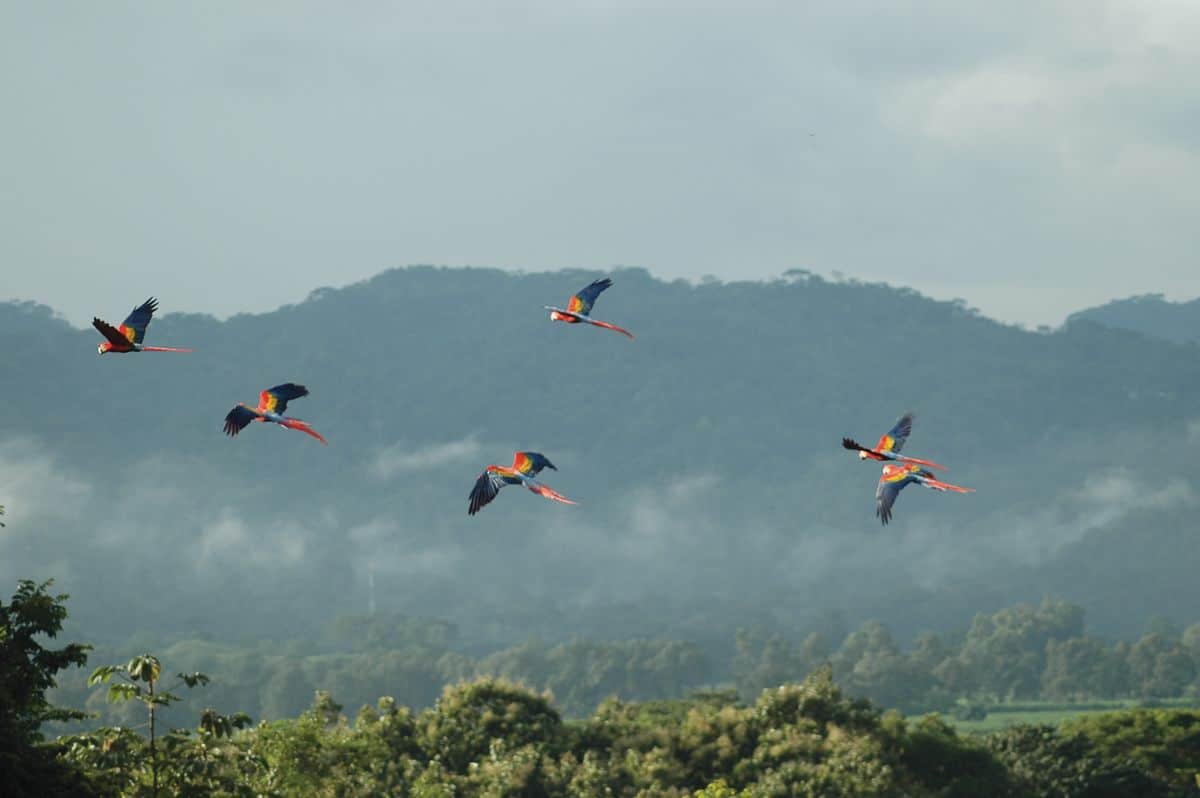The scarlet macaw (Ara macao) stands as an irreplaceable symbol of the unique and extraordinary avian life in Costa Rica. Especially in the Central Pacific region of the country, these birds have seen a flourishing population, boasting numbers greater than two thousand specimens. While their vibrant colors can arrest anyone’s attention, their significance extends far beyond mere aesthetics.
At first glance, the scarlet macaw is recognized for its breathtaking beauty: a fiery blend of red, yellow, and blue feathers that has become synonymous with the region’s rich biodiversity.
Notably, the scarlet macaw holds a critical position in ecological conservation as an umbrella species.
“By focusing conservation efforts on the macaw, we indirectly ensure the protection of numerous other species sharing its habitat. Their well-being dictates the health of the ecosystem. Moreover, their presence plays a pivotal role in ecotourism, attracting nature enthusiasts and contributing to the local economy,” Costa Rican conservation authorities indicated.
La Cangreja National Park has been at the forefront of efforts to study and protect the avifauna of the region. Under its Research Program, yearly bird counts are undertaken in the Protected Wildlife Area and its surrounding zones. These counts are the result of the collaborative efforts of experts, ornithologists, and local enthusiasts from across Costa Rica.
Through these rigorous bird counts, not only has the scarlet macaw’s presence been documented, but also the movements of species like the Red Knot. These studies meticulously gather and analyze data to establish an average count of birds specific to the Central Pacific sector.
The most recent 2023 count brought in heartening news: 2,121 individual birds were identified. Out of these, 1,765 were on their typical schedule, while 365 were off schedule. When compared to the previous year, 2022, where only 1,177 birds were counted, this indicates an astounding growth rate of 180%.
“In fact, if we trace back the numbers, 2020 saw a count of 978, and 2019 had a count of 1,501,” specialists added.
Such data, while encouraging, emphasizes the continual need for conservation efforts. It evidences that with the right measures and collaboration, the country ensures the survival and prosperity of the scarlet macaw and other avian species in the region.






